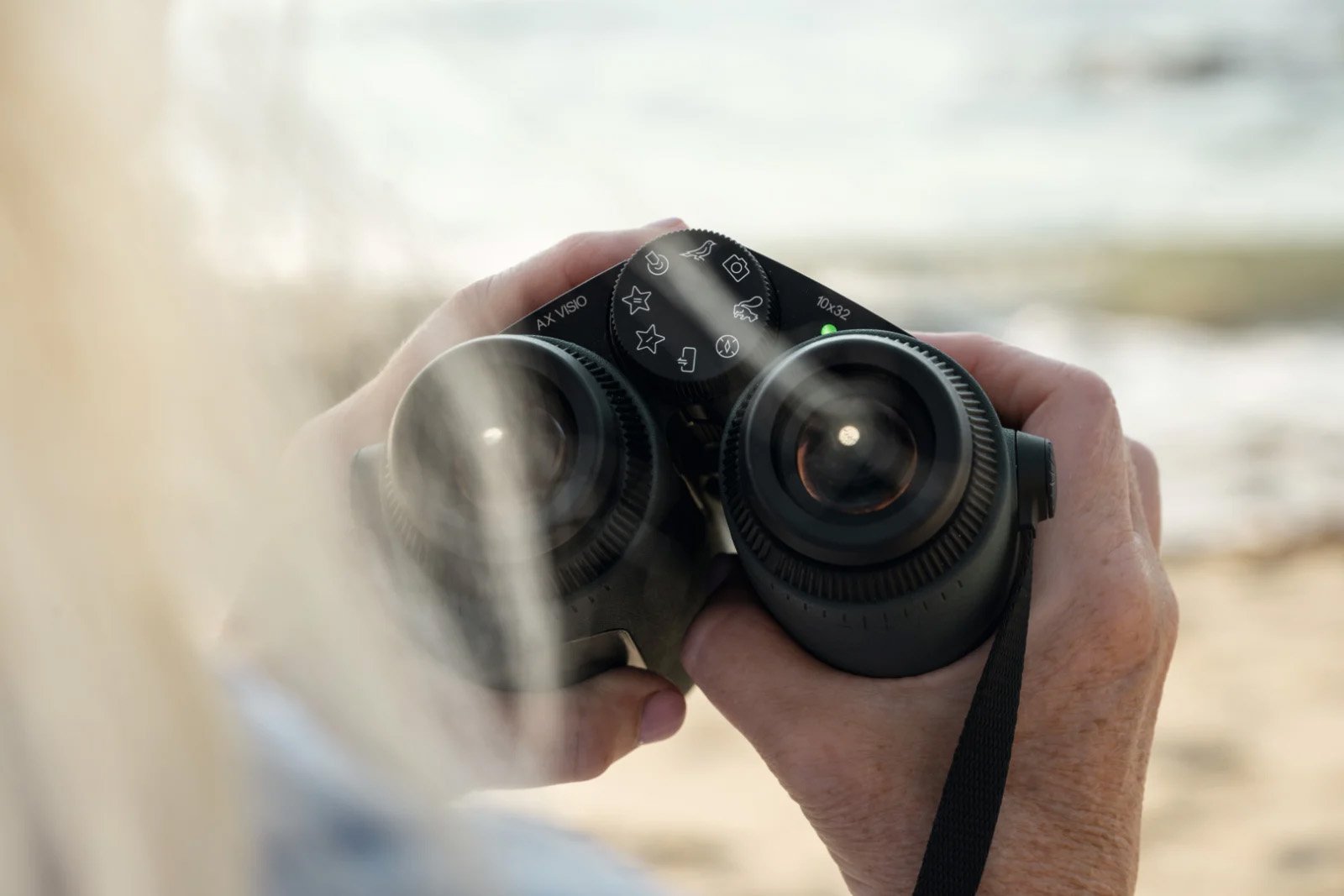World’s First AI Binoculars: Swarovski Optik’s AX Visio Revolutionizes Wildlife Observation
Image Credit: Swarovski Optik
Celebrating 75 years of excellence in long-range optical instruments, Swarovski Optik has ventured into artificial intelligence to elevate its product offerings. The latest innovation, the AX Visio binoculars, marks a significant milestone as the world’s first AI-powered binoculars, developed in collaboration with renowned Australian industrial designer Marc Newson. Priced at approximately US$5,000, the AX Visio promises unparalleled functionality for wildlife observation enthusiasts.
[Read More: Ray-Ban Meta Smart Glasses Merge Style with Cutting-Edge Tech Amid Privacy Concerns]
Advanced Features and Capabilities
The AX Visio is equipped with an onboard computer capable of identifying over 9,000 bird species in real-time, thanks to sophisticated computer vision software. Beyond birds, these binoculars can also recognize various mammals and insects, making them a versatile tool for wildlife observation. The device includes a built-in camera that captures 13-megapixel photos and records 1080p video, allowing users to document their sightings seamlessly.
Users can navigate through different identification settings for birds, mammals, butterflies, and dragonflies using an intuitive mode-selection wheel. The binoculars leverage image recognition and geolocation data from a built-in GPS sensor to enhance accuracy by narrowing down potential species based on the user's location. For bird identification, the AX Visio utilizes a tailored version of the Cornell Lab of Ornithology’s Merlin Bird ID database, while the Mammals ID, Butterfly ID, and Dragonfly ID functions are powered by the Sunbird database. Notably, the bird identification feature operates globally, including in regions like Antarctica, whereas mammal and insect identification are currently limited to Europe and North America.
[Read More: Nikon Z6III Can Now Detect Airplane Precisely!]
Field Testing and User Feedback
The AX Visio was recently tested at the andBeyond Phinda Private Game Reserve in South Africa, where Swarovski Optik facilitated a hands-on evaluation for an amateur bird watcher. Guests at the reserve can rent the binoculars for US$40 per day, with rental proceeds supporting local conservation efforts.
During the field test, the user found the AX Visio user-friendly despite initial concerns about mastering the integrated technology. The binoculars require steady handling and proper focus to ensure accurate identification, indicated by a red circle appearing in the user's viewfinder. Pressing the raised button triggers the identification process, displaying the name of the observed creature within seconds.
While the binoculars successfully identified small birds like the malachite kingfisher and bee-eater, they occasionally struggled with accuracy. With earlier firmware, species were correctly identified around 60 to 70 percent of the time. However, with an updated firmware version, accuracy improved to 80 to 90 percent. Users also reported occasional error messages despite clear visibility, along with some cases of species misidentification, such as confusing similar coucal species.
[Read More: AI Detects Hidden Brain Waves: Early Identification for Dementia Patients]
Continuous Improvement and Future Enhancements
Swarovski Optik plans to address the current accuracy limitations through regular firmware updates delivered via Bluetooth. Recent updates have introduced video stabilization, with future releases aiming to enhance the object recognition system and expand the database to include more species. These updates are expected to improve overall identification accuracy and reliability.
Additionally, the AX Visio features a “share discoveries” function, allowing guides and users to pin and share the precise locations of specific species. This feature facilitates collaborative wildlife tracking and enhances the interactive experience for safari guests.
Technical Specifications and Connectivity
Developed over five years, the AX Visio binoculars boast high-performance analog long-range optics, offering a 112-meter field of view at 1,000 meters, 10X magnification, and 32-millimeter objective lenses. The integrated 13-megapixel camera and 1080p video capabilities provide high-quality imagery suitable for social media sharing and small prints, though not intended for professional photography.
Connectivity with the Swarovski Optik Outdoor App, available on iOS and Android platforms, allows users to transfer and view their captured images and videos. While the app includes species identification data in the metadata, only location information is accessible when files are downloaded to a mobile device.
[Read More: AI Unfolds Butterfly Secrets: A New Perspective on Evolutionary Science]
Transforming Wildlife Observation
The AX Visio represents a paradigm shift in binocular technology, merging traditional optical performance with cutting-edge AI capabilities. By integrating real-time species identification and multimedia documentation into a single device, Swarovski Optik offers wildlife enthusiasts a more efficient and immersive observational experience. This innovation not only enhances the practicality of binoculars but also supports conservation efforts by facilitating the accurate documentation and sharing of wildlife sightings.
Source: Wired









